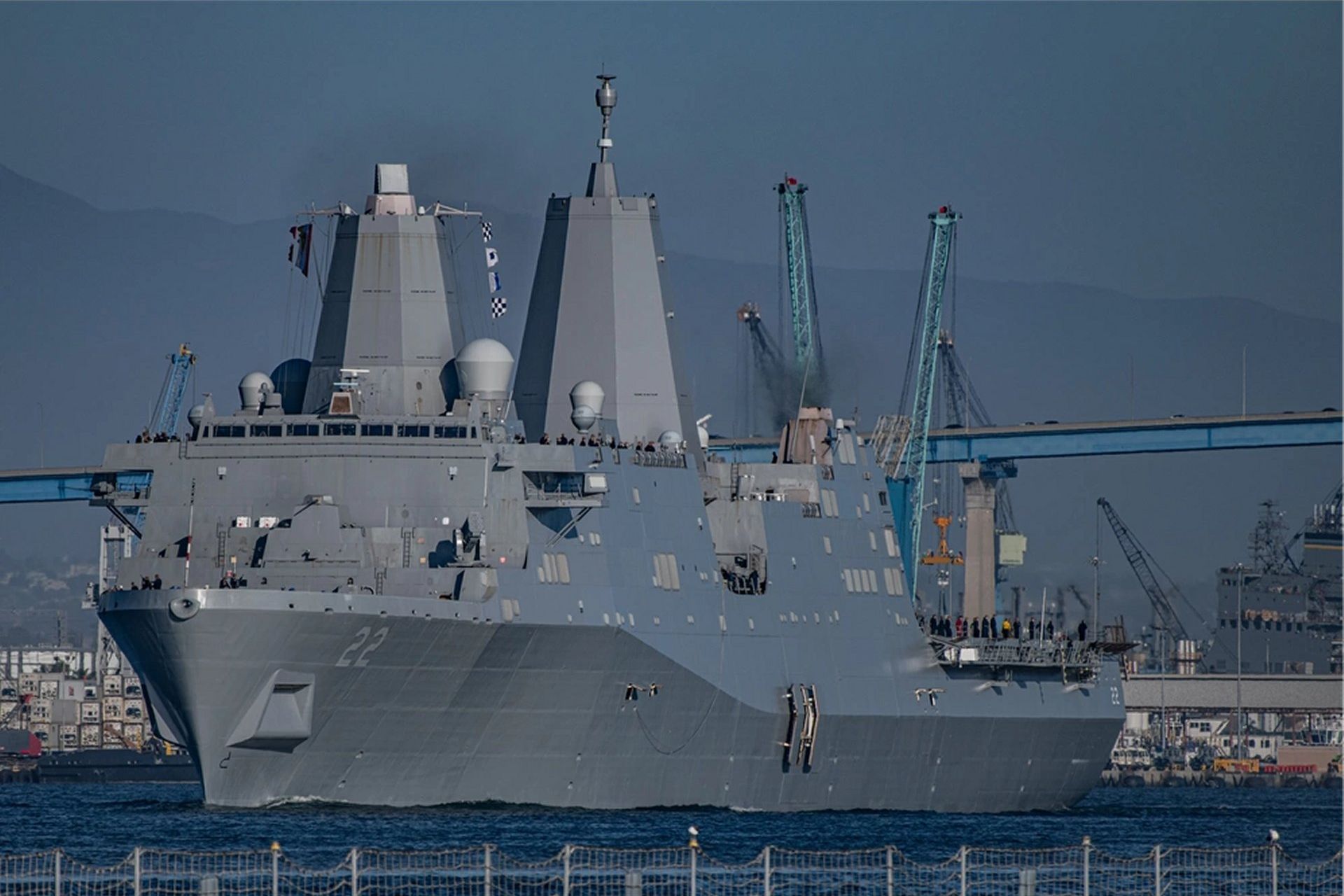Breaking News
USS San Diego heads to Japan for permanent deployment with US Naval Forces.
According to information published by the US DoD on August 14, 2024, the amphibious transport dock ship USS San Diego (LPD 22) departed its namesake city, setting course for its new homeport in Sasebo, Japan. The vessel and its crew, as they permanently join the Forward-Deployed Naval Forces-Japan (FDNF-J), replacing the USS Green Bay (LPD 20), which has been stationed in Sasebo for the past decade.
Follow Army Recognition on Google News at this link

US Navy's San Antonio-class amphibious transport dock ship USS San Diego. (Picture source: Dvids)
The Forward-Deployed Naval Forces-Japan (FDNF-J) include a diverse array of naval assets, from advanced destroyers like the Arleigh Burke-class USS John Finn, which recently joined the fleet, to amphibious transport docks such as the USS San Diego, which is replacing the USS Green Bay at Sasebo. These vessels are equipped with some of the most advanced technologies available, enhancing their operational effectiveness in various missions, including ballistic missile defense and power projection.
Additionally, the FDNF-J's air capabilities have been bolstered with the forward deployment of Strike Fighter Squadron 147, which operates the F-35C Lightning II. This aircraft, alongside the CMV-22B Osprey, strengthens the aerial strike and logistical support for the fleet, based at Marine Corps Air Station Iwakuni.
In 2024, a significant change occurred as the USS George Washington returned to Japan, replacing the USS Ronald Reagan as the forward-deployed aircraft carrier. This swap marked George Washington’s second tenure in Japan, following an extensive refueling and overhaul process in the United States.
The U.S.-Japan alliance is further reinforced through regular joint exercises and increasing military cooperation, particularly in response to growing concerns about regional security challenges, such as those posed by China and North Korea. These drills are crucial for enhancing interoperability between U.S. and Japanese forces and are a key component of the alliance’s deterrence strategy.
Additionally, recent discussions between U.S. and Japanese defense leaders have led to plans for upgrading U.S. military capabilities in Japan, particularly in the southwestern islands near Taiwan. This is part of a broader effort to counter potential threats in the region and underscores the strategic importance of Japan in U.S. defense planning.


























